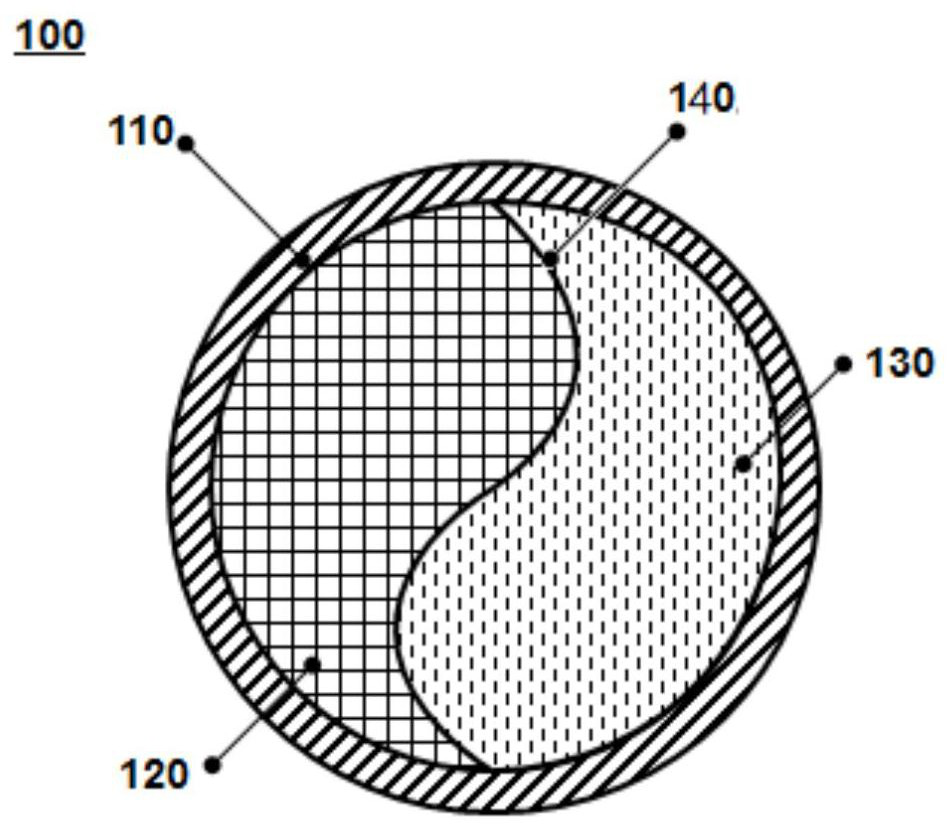Paint for inhibiting thermal runaway of lithium ion battery, coating, positive plate, negative plate, diaphragm and lithium ion battery
A lithium-ion battery, thermal runaway technology, applied to battery electrodes, non-aqueous electrolyte battery electrodes, batteries, etc., can solve problems such as inability to effectively control thermal runaway, slow release of flame retardants, blocking flame retardants, etc., to achieve inhibition Thermal failure of batteries and the effect of suppressing thermal runaway of batteries
- Summary
- Abstract
- Description
- Claims
- Application Information
AI Technical Summary
Problems solved by technology
Method used
Image
Examples
Embodiment 13
[0080] Mix the inhibitor particles prepared in the above-mentioned Examples 1 to 12, the binder carboxymethyl cellulose and the solvent N,N-dimethylformamide (DMF), and then coat them on 5Ah soft-packed lithium The positive pole piece of the ion battery is used as the test battery, and the 5Ah soft-pack lithium-ion battery is used as the reference battery to carry out the thermal runaway test. The test battery coated with the inhibitor particles prepared in Examples 1 to 12 is compared with the thermal runaway of the reference battery. The maximum temperature was significantly reduced, indicating that the coating of inhibitor particles into the positive electrode sheet of the battery can effectively inhibit the thermal runaway of the battery. Wherein the most obvious reduction effect is the test cell coated with the inhibitor prepared in Example 1, such as image 3 As shown, the maximum thermal runaway temperature of the test battery was reduced to 622.7°C, which was 132.8°C l...
Embodiment 14
[0082] Mix the inhibitor particles prepared in the above-mentioned Examples 1 to 12, the binder carboxymethyl cellulose and the solvent N,N-dimethylformamide (DMF), and then coat them on 5Ah soft-packed lithium The ion battery negative pole piece is used as the test battery, and the 5Ah soft-pack lithium ion battery is used as the reference battery for thermal runaway testing. The maximum temperature was significantly reduced, indicating that the coating of inhibitor particles into the negative electrode sheet of the battery can effectively inhibit the thermal runaway of the battery. The damage caused by thermal runaway is mainly caused by its maximum temperature. The higher the maximum temperature, the greater the damage. Therefore, the maximum temperature is reduced, and the risk of thermal runaway of the battery is significantly reduced (the lithium-ion batteries prepared in Examples 1 to 12 have no smoke, fire, or explosion).
Embodiment 15
[0084] Mix the inhibitor particles prepared in the above-mentioned Examples 1 to 12, the binder carboxymethyl cellulose and the solvent N,N-dimethylformamide (DMF), and then coat them on 5Ah soft-packed lithium The ion battery diaphragm is used as a test battery, and the 5Ah soft-pack lithium-ion battery is used as a reference battery for thermal runaway testing. The test battery coated with the inhibitor particles prepared in Examples 1 to 12 has the highest thermal runaway rate compared with the reference battery. The temperature decreased significantly, indicating that the coating of inhibitor particles into the battery separator can also effectively inhibit the thermal runaway of the battery. The damage caused by thermal runaway is mainly caused by its maximum temperature. The higher the maximum temperature, the greater the damage. Therefore, the maximum temperature is reduced, and the risk of thermal runaway of the battery is significantly reduced (the lithium-ion batteri...
PUM
| Property | Measurement | Unit |
|---|---|---|
| tensile strength at break | aaaaa | aaaaa |
| melting point | aaaaa | aaaaa |
Abstract
Description
Claims
Application Information
 Login to View More
Login to View More - R&D
- Intellectual Property
- Life Sciences
- Materials
- Tech Scout
- Unparalleled Data Quality
- Higher Quality Content
- 60% Fewer Hallucinations
Browse by: Latest US Patents, China's latest patents, Technical Efficacy Thesaurus, Application Domain, Technology Topic, Popular Technical Reports.
© 2025 PatSnap. All rights reserved.Legal|Privacy policy|Modern Slavery Act Transparency Statement|Sitemap|About US| Contact US: help@patsnap.com



